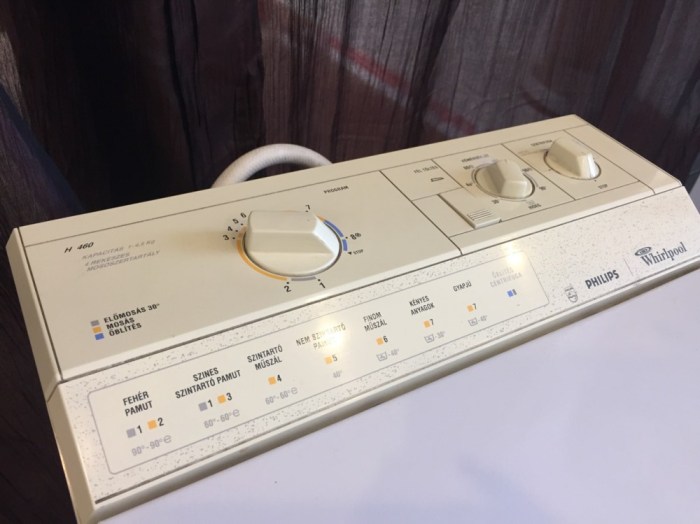Introducing h2293 016 04 – Local PPO, your gateway to understanding the ins and outs of this healthcare insurance option. Let’s dive into the world of local PPOs, exploring their coverage, benefits, and how they can fit your healthcare needs.
From defining the term “local PPO” to discussing the advantages and disadvantages of choosing one, this comprehensive guide will provide you with all the essential information you need to make informed decisions about your healthcare coverage.
Local PPO Code Definition: H2293 016 04 – Local Ppo

A local preferred provider organization (PPO) is a type of health insurance plan that contracts with a network of healthcare providers, such as doctors, hospitals, and other healthcare professionals, to provide discounted rates on healthcare services to its members.
Local PPOs typically operate within a specific geographic area, such as a city or county. This allows them to negotiate lower rates with healthcare providers in their area, which can save members money on their healthcare costs.
Advantages of Using a Local PPO
- Lower healthcare costs: Local PPOs can negotiate lower rates with healthcare providers in their area, which can save members money on their healthcare costs.
- Access to a network of quality healthcare providers: Local PPOs typically contract with a network of quality healthcare providers, which gives members access to a wide range of healthcare services.
- Flexibility: Local PPOs offer members the flexibility to choose their own healthcare providers, which gives them more control over their healthcare.
Disadvantages of Using a Local PPO
- Limited network of providers: Local PPOs typically have a limited network of healthcare providers, which may not include all of the providers that a member may want to see.
- Higher out-of-network costs: If a member uses a healthcare provider that is not in the PPO’s network, they may have to pay higher out-of-network costs.
Coverage and Benefits

Local PPOs offer a wide range of coverage options, tailored to meet the specific needs of their members. These plans typically include coverage for preventive care, doctor visits, hospitalizations, and prescription drugs.
Local PPO plans are designed to provide comprehensive coverage at an affordable cost. They offer a balance between flexibility and cost-effectiveness, making them a popular choice for individuals and families.
Deductibles, Copayments, and Coinsurance
Deductibles, copays, and coinsurance are important cost-sharing mechanisms used in local PPO plans. Understanding how these work can help you make informed decisions about your healthcare coverage.
- Deductible:The deductible is the amount you must pay out-of-pocket before your insurance coverage begins. Once you meet your deductible, your insurance will start to cover eligible expenses.
- Copay:A copay is a fixed amount you pay for certain covered services, such as doctor visits or prescription drugs. Copays are typically lower than deductibles and are paid at the time of service.
- Coinsurance:Coinsurance is a percentage of the cost of covered services that you are responsible for paying after you meet your deductible. Coinsurance is typically expressed as a percentage, such as 20% or 30%. For example, if your coinsurance is 20%, you will pay 20% of the cost of covered services after you meet your deductible.
Finding In-Network Providers and Accessing Covered Services
Local PPOs typically have a network of contracted providers, including doctors, hospitals, and other healthcare professionals. Using in-network providers can help you save money on your healthcare costs.
To find in-network providers, you can contact your insurance company or visit their website. You can also ask your doctor or other healthcare provider if they are in-network with your insurance plan.
Once you have found an in-network provider, you can schedule an appointment and receive covered services. You will typically be responsible for paying any applicable deductibles, copays, or coinsurance at the time of service.
Provider Networks

Local PPOs establish their provider networks through contracts with individual healthcare providers and provider groups. These contracts Artikel the terms of participation, including reimbursement rates, quality standards, and service level agreements. Local PPOs typically maintain a limited provider network to control costs and ensure quality.
Benefits of a Limited Provider Network
* Lower premiums: Limiting the provider network allows local PPOs to negotiate lower reimbursement rates with providers, resulting in lower premiums for members.
Higher quality care
By carefully selecting providers, local PPOs can ensure that their members have access to high-quality healthcare.
H2293 016 04 – Local PPO is a great resource for finding local providers in your area. If you’re looking for more information on the topic of fraternities and sororities, you may also be interested in reading about Omega Psi Phi 20 Pearls . H2293 016 04 – Local PPO can help you find the right provider for your needs.
Reduced out-of-pocket costs
Members can typically access in-network providers at lower out-of-pocket costs than out-of-network providers.
Limitations of a Limited Provider Network, H2293 016 04 – local ppo
* Limited provider choice: Members may have fewer options for providers within the network, especially in rural or underserved areas.
Potential for higher out-of-network costs
If a member needs to see an out-of-network provider, they may face higher out-of-pocket costs.
Tips for Finding the Right Local PPO
* Consider your specific healthcare needs: Choose a local PPO that has a strong network of providers in your area and specializes in your healthcare needs.
Check provider availability
Verify that the local PPO includes the providers you prefer and that those providers are accepting new patients.
Compare premiums and benefits
Research different local PPOs to find one that offers competitive premiums and benefits that meet your needs.
Cost and Value

Local PPO plans generally fall within the mid-range of health insurance costs, offering a balance between affordability and coverage. However, their costs can vary significantly depending on factors such as location, provider network, and level of coverage.
Factors Affecting Cost
*
-*Location
Premiums tend to be higher in urban areas with a higher cost of living.
-
-*Provider Network
PPOs with a wider network of providers typically have higher premiums.
-*Level of Coverage
Plans with more comprehensive coverage, such as those including dental and vision, will generally cost more.
Evaluating Value
To assess the value of a local PPO plan, consider the following:*
-*Coverage and Benefits
Determine if the plan covers your essential healthcare needs and provides the benefits you value.
-
-*Provider Network
Ensure the plan’s network includes healthcare providers you trust and who are conveniently located.
-*Costs
Compare the premiums, deductibles, and co-pays of different PPO plans to find one that fits your budget.
-*Out-of-Pocket Expenses
Estimate the potential out-of-pocket expenses, such as co-insurance and deductibles, to avoid unexpected costs.
By carefully considering these factors, you can make an informed decision about the cost and value of a local PPO plan that meets your specific healthcare needs and financial situation.
Eligibility and Enrollment

To enroll in a local PPO plan, you must meet certain eligibility requirements. These requirements may vary depending on the plan and the insurance carrier. Generally, you must be a resident of the plan’s service area and meet income or employment requirements.The
enrollment process for local PPOs typically involves completing an application and providing documentation to verify your eligibility. The application will ask for personal information, such as your name, address, and date of birth, as well as information about your income and employment status.
You may also need to provide proof of residency, such as a utility bill or driver’s license.Once your application is complete, it will be reviewed by the insurance carrier. If you are approved for coverage, you will receive a welcome packet with information about your plan, including your coverage benefits, provider network, and costs.
Special Considerations and Exceptions
There may be special considerations or exceptions for enrollment in local PPO plans. For example, some plans may offer open enrollment periods during which anyone can enroll, regardless of their eligibility. Other plans may have special enrollment periods for people who have recently lost their health insurance or who have experienced a qualifying life event, such as getting married or having a baby.If
you have any questions about eligibility or enrollment for a local PPO plan, you should contact the insurance carrier directly.
FAQ Overview
What is a local PPO?
A local PPO, or Preferred Provider Organization, is a type of health insurance plan that contracts with a network of healthcare providers in a specific geographic area.
What are the benefits of using a local PPO?
Local PPOs offer several benefits, including access to a network of quality healthcare providers, lower out-of-pocket costs when using in-network providers, and flexibility in choosing providers within the network.
How do I find the right local PPO for me?
Consider your healthcare needs, budget, and the availability of providers in your area when choosing a local PPO. Compare plans from different insurers and read reviews from current or former members.
